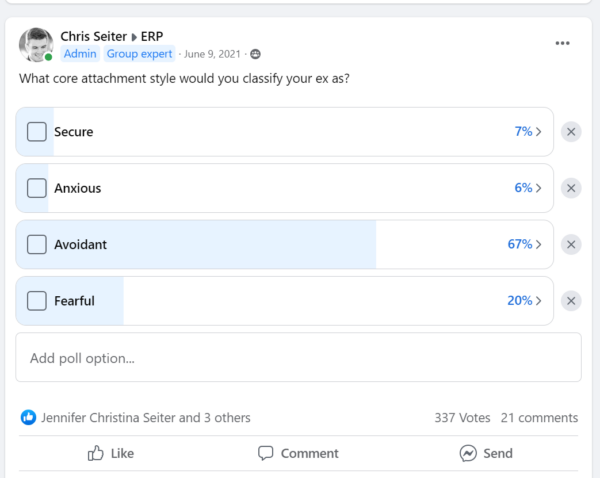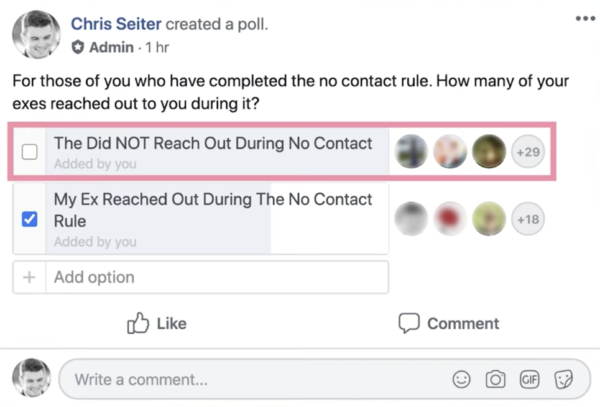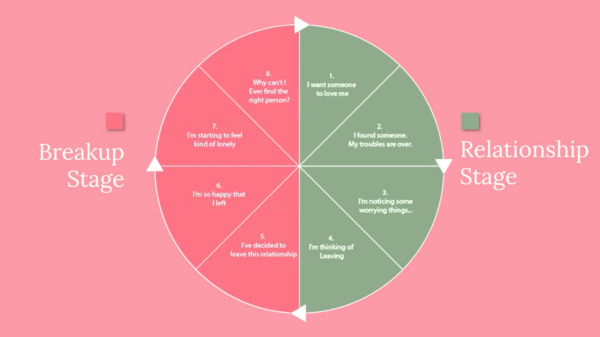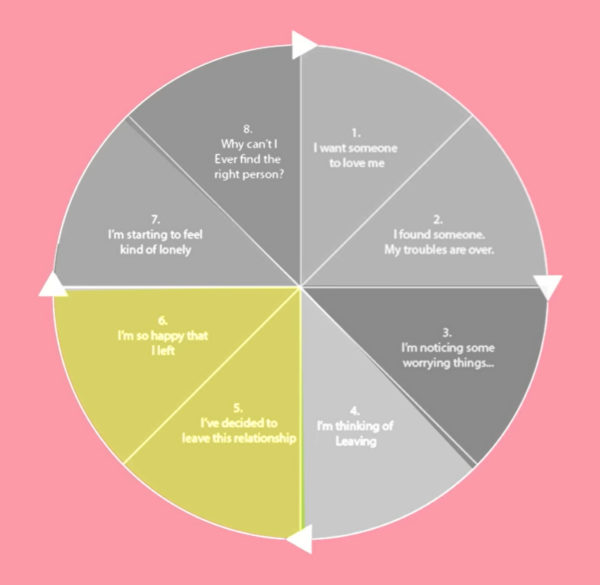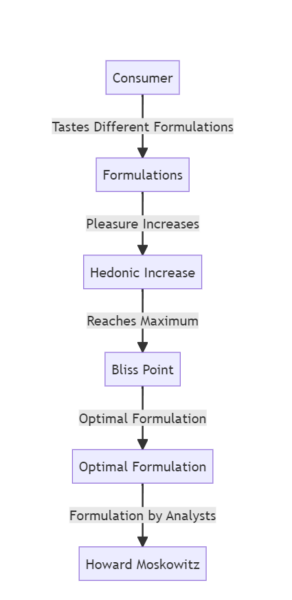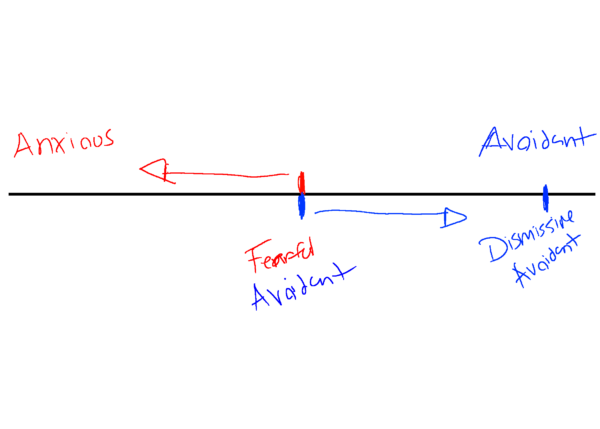I found out if silence from you ex is a good thing and ohhhh boy do I have thoughts.
In all, I believe that the question is framed improperly. Silence from an ex after a breakup isn’t good or bad, it’s simply natural due to the fact that most of the exes we’re seeing have dismissive avoidant tendencies.
I know that’s incredibly complicated but bear with me here.
I promise I’m going to dive into some epic stuff today.
Things like:
- The most common reason exes tend to be silent after a breakup
- My argument for why silence is just a natural thing for most exes
- If too much silence can be a bad thing
- The bliss point experiment
- The ideal amount of silence you should allow an ex to have
Let’s go!

What Are Your Chances of Getting Your Ex Boyfriend Back?
Take the quizThe Most Common Reason Exes Tend To Be Silent After A Breakup
You know, there’s a bunch of theories floating around, but the one I lean into most is grounded in science.
From my perspective, the best explanation for why exes usually go silent after a breakup is because it’s just part of their psychological makeup. We’ve done our homework – numerous internal surveys have shown about 70% of our clients perceive their exes as having dismissive-avoidant tendencies.
(Well, 67% to be exact)
What’s dismissive-avoidant you ask?
Well, as the label suggests, these folks generally dodge confrontation. They steer clear from commitments, or even deeper conversations about commitment.
I talk about that in this video,
It’s hardly surprising then, that if you’re dealing with a dismissive-avoidant individual, they might not want to contact you post-breakup.
Our findings resonate with what the ULTIMATE Avoidant Attachment Resource, a really insightful website I regularly visit called Free To Attach,
Avoidants typically don’t initiate contact with their exes and rarely push for reconciliation on their own. It makes them feel too vulnerable and they often struggle to navigate the path towards resolution.
So there you have it – the silence of exes after a breakup can often be traced back to their dismissive-avoidant tendencies.
But Is Silence From Your Ex A Good Thing?
I’d argue it’s not strictly bad, nor is it all good.
It’s more a natural behavior pattern we’ve noticed in most exes through our study at Ex Boyfriend Recovery.
This pattern is even apparent among people who implement the no contact rule with their exes.
Most clients who join our program have heard about the no contact rule.
It’s a big hit, easily one of the most popular topics in the breakup industry. Yet, many people naturally assume that if you use the no contact rule with your ex, they’re more likely to reach out, to initiate contact.
However, our survey revealed that the vast majority of people who use the no contact rule do not get contacted by their ex.

What Are Your Chances of Getting Your Ex Boyfriend Back?
Take the quizYes, some do, but most don’t.
This aligns with what we know about the avoidant attachment style. It’s logical to expect that if your ex exhibits avoidant tendencies, they’re not likely to be the first to reach out. But as I always say, this is a natural approach for them.
I’m known for creating the ‘Avoidant Death Wheel’,
A graphic that I reference in almost every article I write, video I film, or podcast I record. It is, in my opinion, one of the best tools to help you understand what your ex is going through during the breakup.
The ‘Avoidant Death Wheel’ has eight main stages:
- I want someone to love me.
- I found someone, and my troubles are over.
- I’m noticing some worrying things.
- I’m thinking of leaving.
- I’ve decided to leave the relationship.
- Hey, I’m so happy I left.
- I’m starting to feel kind of lonely.
- Why can’t I ever find the right person?
And so the cycle repeats.
The post-breakup phase in the ‘Avoidant Death Wheel’ begins from stage five,
Where your ex decides to leave the relationship. Initially, most avoidant exes don’t reach out because they’re reveling in the freedom of being single. They’re basking in the glory of independence regained.
If you know anything about the core wound of an avoidant attachment style, you’ll understand that any threat to their independence can be triggering. In a relationship, they feel their independence is under attack. When they exit the relationship, they’re celebrating – it’s a sort of ‘separation elation.’
They’ve reclaimed their independence.
And that’s usually when the silent phase kicks in.
Whether you’re implementing a no contact rule, or they’re simply avoiding you due to the reminder of potential deeper commitment, it’s crucial to realize this silent phase doesn’t last forever.
By stage seven – the ‘I’m starting to feel kind of lonely’ phase – avoidant individuals start to feel the pinch.
They’re often seen as lone wolves, but they, too, have emotional needs. They start feeling a bit lonely, maybe even a bit sorry for themselves. They start questioning, ‘Why does this always happen to me?’ Their silence during this time usually leads them to reminisce about the relationship – to experience what I call ‘breakup nostalgia’.
What exactly is ‘breakup nostalgia’?
Well, a few years ago, I made a video on how to make avoidant individuals miss you.
One of the key points I emphasize in that video is the importance of giving them space.
This space allows them to tap into the nostalgic memory of the relationship with you. If they think you’ve moved on, that enough time has passed, that you’ve outgrown them, they give themselves permission to start recalling the positive times.
It’s a pattern with them, and it’s crucial to recognize because many people I’ve seen in our program don’t allow their avoidant ex this silent phase. They want to fix things, to ensure they have the best shot at winning their ex back.
Ironically, the more they push, the less likely their ex is to tap into that nostalgic reverie, which is essential if you’re trying to win them back.

What Are Your Chances of Getting Your Ex Boyfriend Back?
Take the quizAs I’ve said, for an avoidant person, this silent period is a natural occurrence. Whether it’s good or bad, you do play a role in that outcome. If you’re overly anxious and push too hard, you may prompt the avoidant to skip stages 7 or 8 and simply move on to a new relationship.
An interesting thing about avoidants is what I often call their ‘honeymoon period chasing’.
They frequently jump from one relationship to the next, never letting the relationship mature past the honeymoon stage – and that’s by design. Think about it, during the honeymoon phase, there’s usually no talk of deeper commitment, which is an ideal situation for someone with a dismissive avoidant attachment style. They reap all the benefits without the risk of losing their independence.
But the moment that honeymoon period wears off, that’s when the ‘Avoidant Death Wheel’ begins to roll onto the next stage – ‘Hey, I’m noticing some worrying things’.
But this leads us to an intriguing question…
Can Too Much Silence Be A Bad Thing?
Absolutely.
That’s why I usually recommend my clients stick to a maximum 45-day period for the no contact rule. We’ve discovered that if you give your ex too much space, it can negatively affect your chances. But the same goes if you don’t give them enough space. It’s about finding that sweet spot.
Take the food industry, for example.
They have this intriguing concept called the ‘Bliss Point’ experiment.
It stems from sensory analysis, and is often referred to as the ‘hedonic optimum’ or ‘hedonic peak’ – it’s essentially the point where pleasure or hedonism derived from consuming a food or drink is maximized. A researcher named Howard Moskowitz ran a fascinating experiment to identify the precise quantity of ingredients that would help food reach this ‘Bliss Point’.
Applying the same concept to an ex, it’s all about finding that ‘Bliss Point’ of silence – the perfect amount where they don’t feel overwhelmed by your presence, but also not so much that they feel it’s okay to move on, assuming of course you want them back.
If you don’t, then this doesn’t matter at all.
That’s why choosing a no contact rule timeframe is one of the most critical decisions you’ll make.
Choosing The Right Amount Of Silence
Previously, we used to have complex methods to help people decide on a no contact timeframe.
I even created a rather intricate quiz at one point.
But, what I’ve found to work best is to base the no contact rule timeframes on attachment styles.
Typically, we recommend three timeframes to our clients:
- A 21-day rule
- A 30-day rule
- A45-day rule
The 21 Day Rule
This works best for an anxious ex or someone showing fearful avoidant tendencies. This may surprise some, as individuals with a fearful avoidant attachment style often fluctuate between being extremely anxious to exceedingly avoidant.
We’ve found that allowing them to swing too much between these states without nurturing their anxious side can have more negative effects than positive. By reducing the ‘Bliss Point’ of the no contact rule for fearful avoidants down to 21 days, we’ve observed some success.

What Are Your Chances of Getting Your Ex Boyfriend Back?
Take the quizThe 30 Day Rule
The 30-day rule is ideal if you believe your ex was relatively secure.
For a secure ex, 30 days will feel like 30 days. Not too much to add here unfortunately.
The 45 Day Rule
The 45-day rule, on the other hand, should be used for dismissive avoidant exes. This is why most people who come through our program should be using a 45-day rule, as their exes typically have avoidant attachment styles.
All this is done in pursuit of the ‘Bliss Point’.
We aim to find that perfect moment of silence where you can reach out to your ex just as they’re beginning their nostalgic reverie. They’re more likely to be receptive towards you at this stage.
Is it an exact science? Not at all.
But I will say this: it’s been working wonders for our clients lately, so you might want to give it a go.
